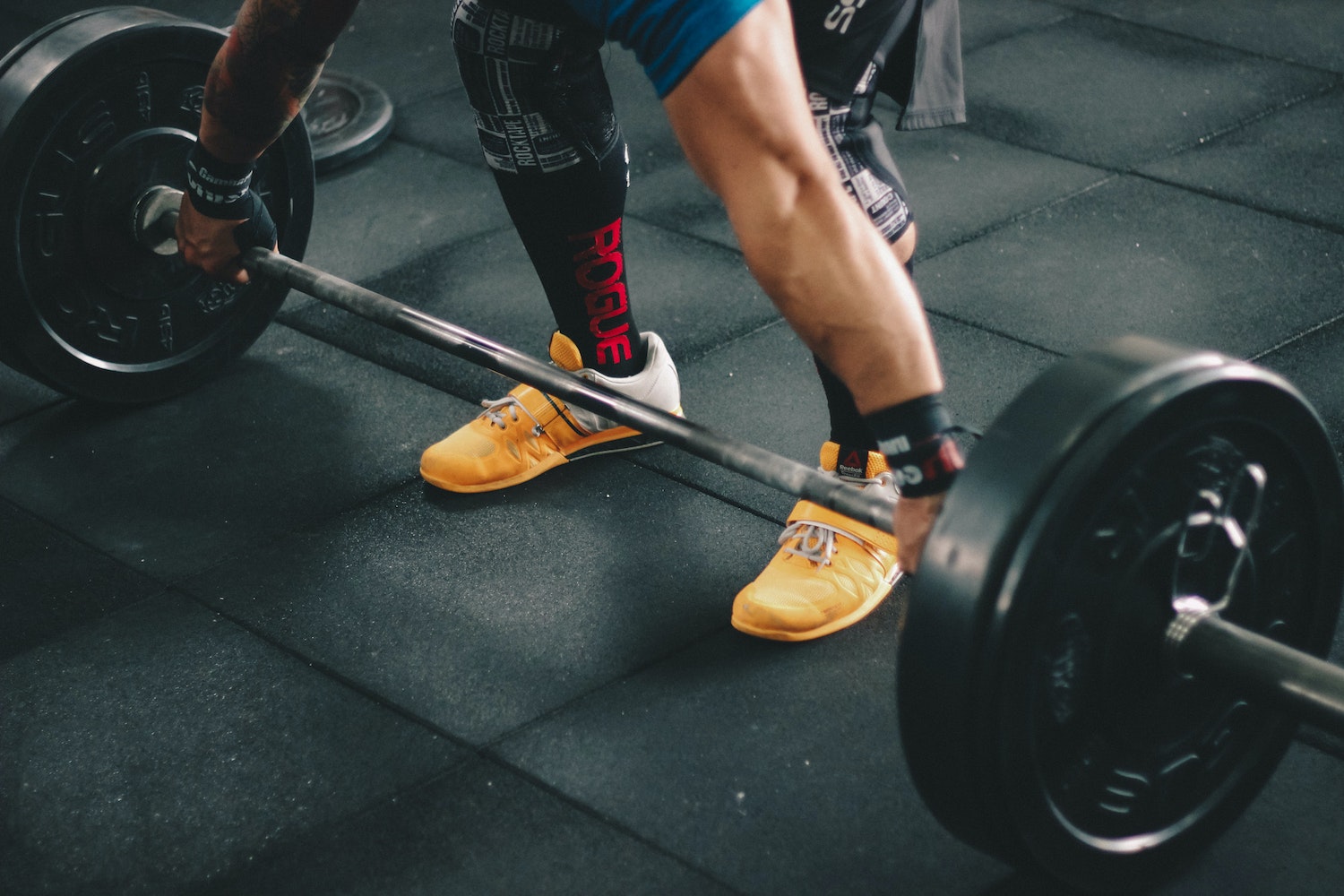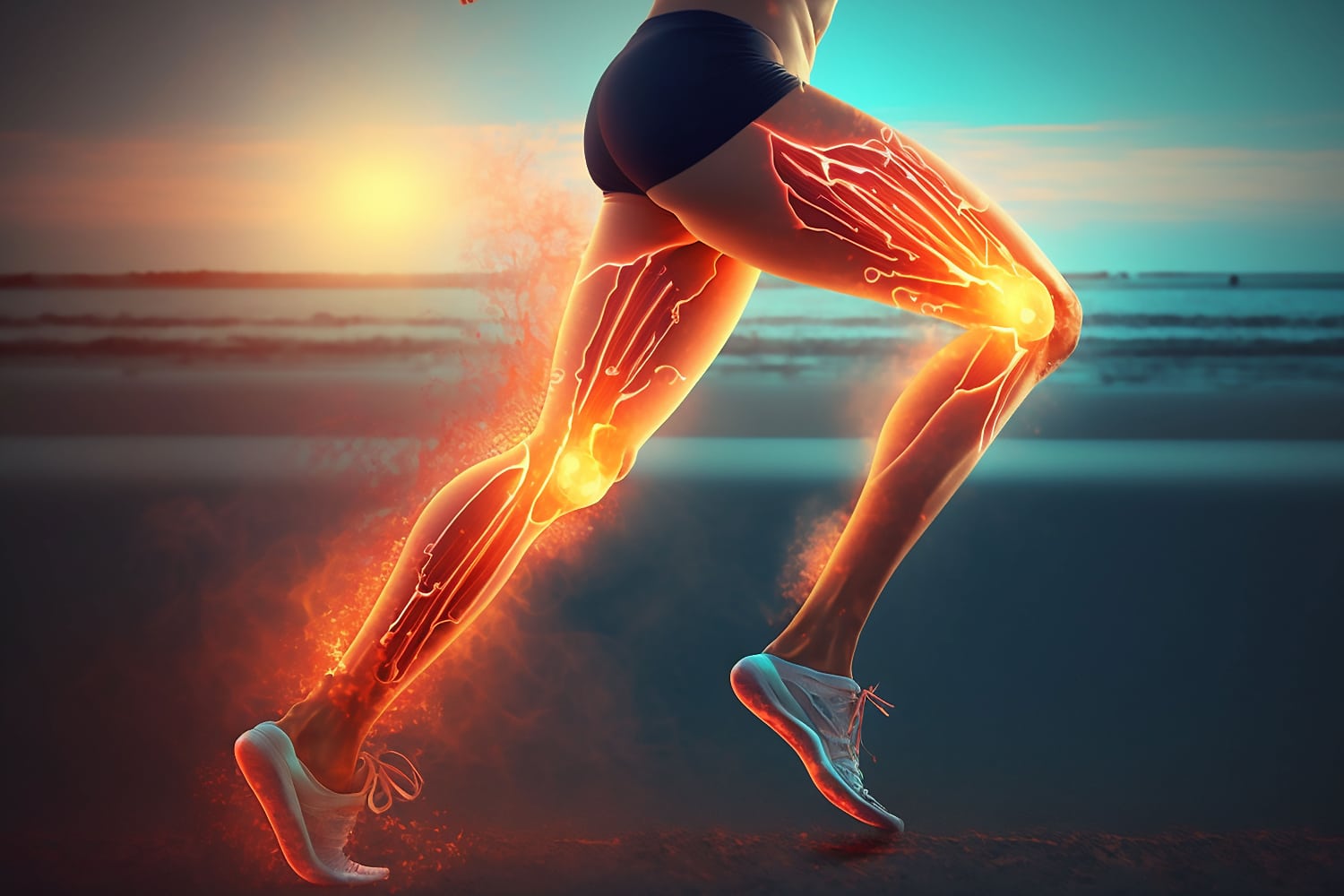How Long Does Muscle Soreness Last?
|
| Delayed onset muscle soreness, or DOMS as it's commonly known, is a familiar experience for many of us who engage in physical activity. Whether we're pounding the pavement on a morning jog, lifting weights at the gym, or simply gardening on a sunny day, the following muscle soreness can range from a minor inconvenience to a significant hindrance. |
But what exactly is DOMS, and why does it happen to us?
In this blog post, we'll delve into the science of DOMS and explore the underlying mechanisms behind this post-exercise experience. Then, we'll examine the symptoms, causes, and best ways to prevent and treat it, and by the end of this post, you'll have a deeper understanding of this familiar phenomenon and the steps you can take to keep your muscles feeling their best.
What Is Delayed Onset Muscle Soreness (DOMS)?

If you push yourself at the gym one day and find yourself feeling sore and worse for wear the following day, this is DOMS in its full glory.
This post-exercise phenomenon is characterized by muscle pain, stiffness, and a decrease in strength and usually shows up 12 to 24 hours after your workout.
At the heart of DOMS lies a network of microscopic tears in the muscle fibers. These tears result from physical stress inflicted upon the muscles, whether from a new or intense workout, overuse of a particular muscle group, or a change in physical activity. In response, the body launches an inflammatory response by releasing cytokines and other inflammatory mediators, bringing in immune cells to help repair the damaged tissue.
Lactic acid build-up and muscle fatigue can also play a role in developing DOMS. Lactic acid is a byproduct of muscle metabolism during exercise, and increased lactic acid levels can cause muscle fatigue and discomfort.
So, what does this all mean for you and your workout routine? Fortunately, DOMS is a normal response to physical activity and is not a sign of permanent muscle damage. In fact, it's a sign you're putting your muscles to the test, prompting them to grow back stronger.
How Long Does Muscle Soreness Last?
Depending on the level of exertion, muscle soreness can last for two to five days, and may vary in severity.
Generally, post-workout muscle soreness tends to increase in severity before eventually getting better. Some say that muscle soreness reaches its peak around day two or three, but this may not be the case for everyone.
If you have muscle soreness that lasts longer than a week, this is a sign to consult your doctor. Persistent and prolonged muscle soreness may indicate an injury that has gone unnoticed, and your doctor will be able to work with you to determine the cause and craft a treatment plan.
What Causes DOMS?

While microscopic tears in the muscle fibers, lactic acid build-up, and muscle fatigue have already been mentioned, let's delve deeper and get more granular with the specifics.
Eccentric Muscle Contractions
Eccentric muscle contractions occur when the muscle lengthens while contracting, such as when lowering a weight during a bicep curl. These contractions have been shown to cause greater muscle damage and increase DOMS severity.
In addition, eccentric contractions generate more tension in the muscle fibers than concentric contractions (when the muscle shortens while contracting, such as lifting a weight during a bicep curl), causing more time under tension.
Connective Tissue Damage
In addition to muscle fibers, connective tissues such as tendons and ligaments can also be damaged during physical activity, leading to DOMS. These tissues support the muscles and transmit forces between the bones and muscles. When connective tissues are damaged, they can cause inflammation and pain — and DOMS.
Overuse
DOMS can arise from repetitive strain on a particular muscle group, especially when proper rest and recovery are not incorporated into an individual's routine. Over time, this can lead to the repeated pounding of the same muscles, resulting in damage and the eventual development of DOMS.
New Challenges
Starting a new exercise program or incorporating a new type of physical activity into your routine can also lead to DOMS. Your muscles may not be ready for the new stressors, leading to damage and inflammation that result in the tell-tale signs of DOMS.
Improper Warmups
Skipping a proper warmup before physical activity is a recipe for DOMS disaster. An adequate warmup helps to prepare the muscles for physical activity by increasing blood flow and loosening the joints. Without a warmup, the muscles are more susceptible to damage, making them more prone to developing DOMS.
Range of Motion
Engaging in physical activity that requires a greater range of motion than your muscles are used to can also increase the risk of DOMS. When you participate in a physical activity that demands more from your muscles than they are used to, the increased stress can lead to damage and inflammation, resulting in the onset of DOMS.
How Can You Prevent and Treat Delayed Onset Muscle Soreness?
DOMS can be a nuisance, but it doesn't have to be an inevitable part of your post-workout routine. By incorporating certain prevention and treatment measures, you can reduce the severity and duration of DOMS. Let's explore the most effective strategies for preventing and treating DOMS.
When it comes to delayed onset muscle soreness (DOMS), you want to ensure you're taking the best care of your muscles. That's why the experts at the American College of Sports Medicine (ACSM) have developed a comprehensive guide to DOMS prevention and treatment.
Physical Therapy and Exercise
The ACSM's recommendations begin with physical therapy and physical activity. Incorporating light exercises, such as walking or cycling, into your post-workout routine can help to improve your range of motion and reduce muscle soreness. The ACSM also suggests incorporating foam rolling into your routine. Foam rolling can help alleviate muscle tension, increase blood flow, and reduce the risk of developing DOMS.
Active Recovery
In addition to physical therapy and foam rolling, the ACSM recommends incorporating active recovery techniques into your post-workout routine. This can involve light exercise, such as walking or cycling, or using ice packs to reduce inflammation and speed up recovery.
The ACSM also suggests taking over-the-counter nonsteroidal anti-inflammatory drugs (NSAIDs), such as ibuprofen, to relieve symptoms of DOMS.
Consult Your Doctor
The ACSM also recommends seeking medical attention if you experience sharp pain or limited range of motion. This could indicate a more severe injury, such as a muscle strain or sprain, and prompt medical attention is essential to ensure a complete and proper recovery.
The ACSM's comprehensive guide to DOMS prevention and treatment is a scientifically sound approach to reducing the risk of developing DOMS and promoting overall muscle health. By incorporating these techniques into your post-workout routine, you can ensure that your muscles get the support they need to recover and perform at their best. So, why wait? Start following the ACSM's recommendations today and take your muscle health to the next level!
Is DOMS Beneficial?
Delayed onset muscle soreness (DOMS) is often viewed as a hindrance to physical activity, but in reality, it can offer many unexpected benefits to those engaging in exercise and athletic pursuits.
One of the most notable advantages of DOMS is the enhancement of blood flow to the affected muscles. During the inflammatory response, blood flow to the damaged muscle fibers increases, bringing a flood of oxygen and essential nutrients that expedite the healing and repair process. The high blood flow also helps to eliminate waste products, such as lactic acid, that can cause muscle fatigue and discomfort.
Another benefit of DOMS is the improved range of motion and flexibility of the affected muscles. As the muscles heal and repair, they become stronger and more resilient, resulting in improved physical activity performance and a reduced risk of injury. The combination of improved flexibility and range of motion can also lead to a greater sense of athletic capability and overall physical wellness.
Furthermore, DOMS can contribute to the overall strengthening of the affected muscles. As the muscles heal and repair, they become stronger and more resilient, enabling improved performance in physical activity and overall wellness.
How Does Nutrition Impact DOMS?

Your muscles are like building sites, constantly undergoing construction to repair and grow. And what do building sites need to complete their projects? Raw materials, of course! The same goes for your muscles when they experience delayed onset muscle soreness (DOMS).
After an intense workout, your muscle fibers undergo microscopic tears, which need the right raw materials to repair and grow stronger. That's where protein comes in. By consuming adequate amounts of high-quality protein, you can provide your muscles with the necessary building blocks to repair and recover from DOMS.
Protein is broken down into amino acids, which are then used to repair and rebuild damaged muscle fibers. This helps to reduce the severity of DOMS and speed up the healing process. So, ensure you're fueling your muscles with the proper nutrients by incorporating lean meats, poultry, fish, dairy, and plant-based proteins into your diet.
Remember, your muscles need the right raw materials to repair and grow stronger after a workout; protein is a critical ingredient in this process. So, don't neglect your protein intake, especially after a challenging workout that may result in DOMS.
Conclusion
In conclusion, delayed onset muscle soreness (DOMS) is a common phenomenon experienced by athletes and fitness enthusiasts alike. However, with proper care and attention, DOMS doesn't have to hinder your physical pursuits. From warmups and foam rolling to light exercise and active recovery techniques, there are several methods for preventing and reducing the symptoms of DOMS.
And let's remember the role of nutrition, specifically protein, in the recovery process. By providing your muscles with the necessary building blocks, you can help speed up the healing process and reduce the severity of DOMS.
At Muscle MX, we understand the importance of addressing the impact of DOMS and promoting discomfort-free living. We work to empower individuals with modern science and traditional remedies to optimize their body's performance, reduce discomfort and irritation, and lead healthier, more active lives. Join us in our quest for discomfort-free living and experience the power of Muscle MX for yourself.
Sources:
ACSM | The American College of Sports Medicine
Delayed onset muscle soreness (DOMS) | Physiopedia
What Is Lactic Acid? | Cleveland Clinic













































